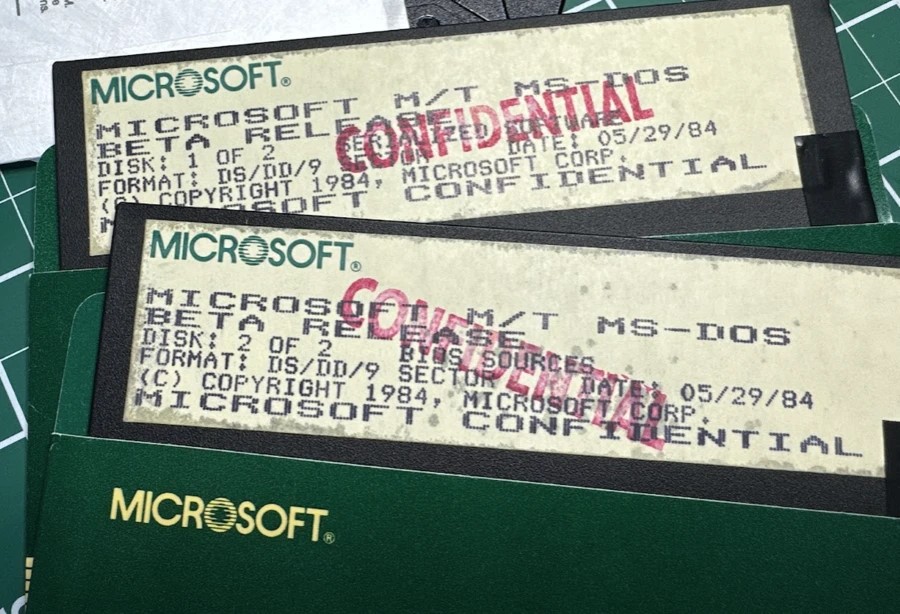a road not traveled —
DOS 4.00 was supposed to add multitasking to the OS, but it was not to be.

Enlarge / A DOS prompt.
Microsoft has open-sourced another bit of computing history this week: The company teamed up with IBM to release the source code of 1988’s MS-DOS 4.00, a version better known for its unpopularity, bugginess, and convoluted development history than its utility as a computer operating system.
The MS-DOS 4.00 code is available on Microsoft’s MS-DOS GitHub page along with versions 1.25 and 2.0, which Microsoft open-sourced in cooperation with the Computer History Museum back in 2014. All open-source versions of DOS have been released under the MIT License.
Initially, MS-DOS 4.00 was slated to include new multitasking features that allow software to run in the background. This release of DOS, also sometimes called “MT-DOS” or “Mutitasking MS-DOS” to distinguish it from other releases, was only released through a few European PC OEMs and never as a standalone retail product.
The source code Microsoft released this week is not for that multitasking version of DOS 4.00, and Microsoft’s Open Source Programs Office was “unable to find the full source code” for MT-DOS when it went to look. Rather, Microsoft and IBM have released the source code for a totally separate version of DOS 4.00, primarily developed by IBM to add more features to the existing non-multitasking version of DOS that ran on most IBM PCs and PC clones of the day.
Microsoft never returned to its multitasking DOS idea in subsequent releases. Multitasking would become the purview of graphical operating systems like Windows and OS/2, while MS-DOS versions 5.x and 6.x continued with the old one-app-at-a-time model of earlier releases.
Microsoft has released some documentation and binary files for MT-DOS and “may update this release if more is discovered.” The company credits English researcher Connor “Starfrost” Hyde for shaking all of this source code loose as part of an ongoing examination of MT-DOS that he is documenting on his website. Hyde has posted many screenshots of a 1984-era build of MT-DOS, including of the “session manager” that it used to track and switch between running applications.

Confidential copies of the obscure, abandoned multitasking-capable version of MS-DOS 4.00. Microsoft has been unable to locate source code for this release, sometimes referred to as “MT-DOS” or “Multitasking MS-DOS.”
Microsoft
The publicly released version of MS-DOS 4.00 is known less for its new features than for its high memory usage; the 4.00 release could consume as much as 92KB of RAM, way up from the roughly 56KB used by MS-DOS 3.31, and the 4.01 release reduced this to about 86KB. The later MS-DOS 5.0 and 6.0 releases maxed out at 72 or 73KB, and even IBM’s PC DOS 2000 only wanted around 64KB.
These RAM numbers would be rounding errors on any modern computer, but in the days when RAM was pricey, systems maxed out at 640KB, and virtual memory wasn’t a thing, such a huge jump in system requirements was a big deal. Today’s retro-computing enthusiasts still tend to skip over MS-DOS 4.00, recommending either 3.31 for its lower memory usage or later versions for their expanded feature sets.
Microsoft has open-sourced some other legacy code over the years, including those older MS-DOS versions, Word for Windows 1.1a, 1983-era GW-BASIC, and the original Windows File Manager. While most of these have been released in their original forms without any updates or changes, the Windows File Manager is actually actively maintained. It was initially just changed enough to run natively on modern 64-bit and Arm PCs running Windows 10 and 11, but it’s been updated with new fixes and features as recently as March 2024.
The release of the MS-DOS 4.0 code isn’t the only new thing that DOS historians have gotten their hands on this year. One of the earliest known versions of 86-DOS, the software that Microsoft would buy and turn into the operating system for the original IBM PC, was discovered and uploaded to the Internet Archive in January. An early version of the abandoned Microsoft-developed version of OS/2 was also unearthed in March.